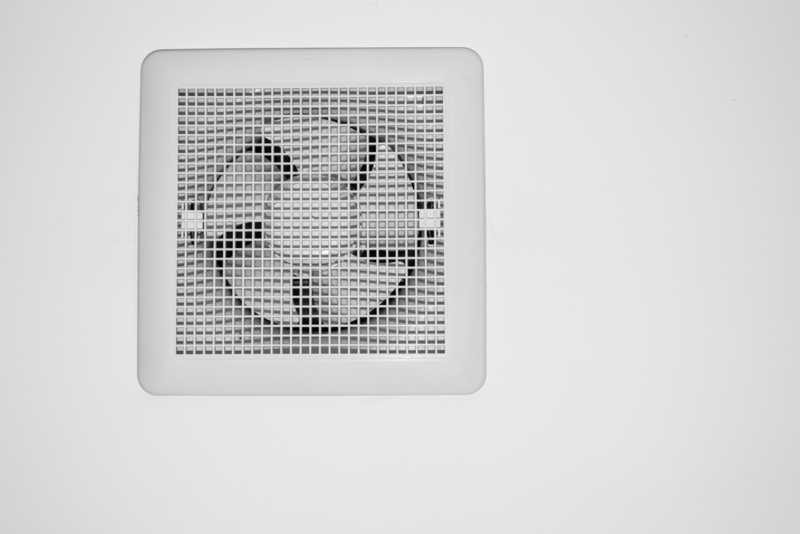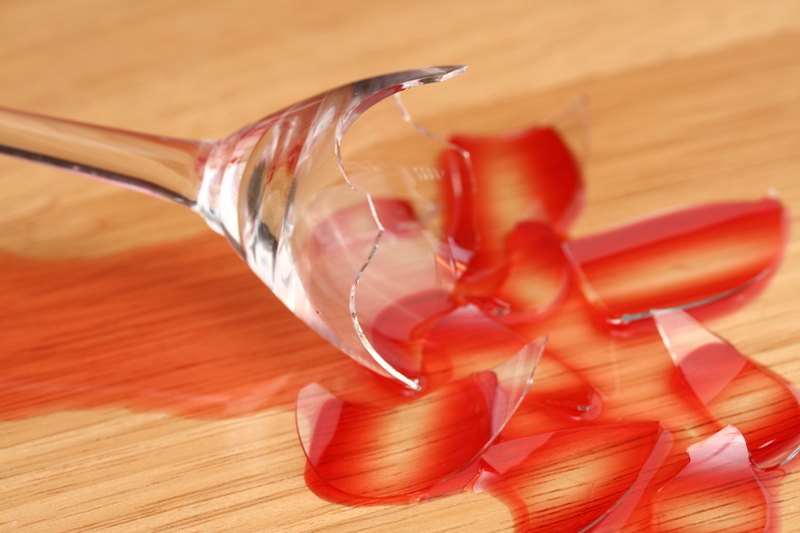Polish Your Car to Perfection: A Pro's Guide
Posted on 13/09/2025
Polish Your Car to Perfection: A Pro's Guide
Dreaming of achieving that showroom shine on your vehicle? Polishing your car like a pro isn't reserved for automotive experts. With the right knowledge, techniques, and tools, car polishing can transform a dull ride into a head-turner. Whether you want to impress at a car show, increase resale value, or simply enjoy the satisfaction of a flawless finish, this in-depth guide will walk you through every essential step. Let's dive into the ultimate guide to polishing your car to perfection.
Why Polish Your Car?
Polishing goes beyond superficial looks--it's an essential aspect of car care. Here's why polishing your automobile matters:
- Removes surface imperfections such as swirl marks, scratches, oxidation, and water spots.
- Restores a deep, brilliant shine to neglected or aging paintwork.
- Prepares your vehicle's surface for waxing or ceramic coatings, enhancing protection.
- Increases resale value by offering a like-new appearance.
- Boosts personal pride in vehicle ownership.

Understanding The Car Polishing Process
To polish your car to perfection, it's crucial to know the difference between cleaning, polishing and waxing:
- Cleaning: Removes dirt, grime, and contaminants from your car's surface.
- Polishing: Uses abrasives to remove imperfections and create a smooth, reflective finish.
- Waxing/Sealing: Applies a protective layer on top of the polished paint.
Focusing on the second step, car paint polishing is where the magic happens. It's a skill that combines technique, patience, and the right products.
Assess Your Paintwork: The First Step
Before you start polishing your vehicle, conduct a thorough paint inspection. Look closely in direct sunlight or with a swirl-finding flashlight. Watch for:
- Fine swirl marks and holograms
- Deeper scratches
- Oxidation (dull, faded areas)
- Water spots or etching
- Tree sap or bird dropping stains
Understanding your car's paint condition helps you select the correct car polish and technique, ensuring the best results.
Essential Tools & Supplies for a Flawless Polish
What You Need to Polish a Car Perfectly
Perfect car polishing starts with the right equipment. Here's a pro's toolkit:
- Dual action polisher (random orbital polisher is ideal for beginners and pros alike)
- Quality car polish compounds (from heavy-cut for deeper scratches to fine/finishing polish for gloss)
- Polishing pads (foam, microfiber, wool--each has its purpose)
- Clean microfiber towels
- Detailing clay bar and lubricant
- Chemical decontamination spray (optional but highly recommended)
- Masking tape (to protect trim and sensitive areas)
- Panel wipe or isopropyl alcohol (for final inspection)
- Touch-up paint or clear coat (for deeper damage that polishing can't fix)
Tip: Use only clean, high-quality pads and towels to prevent adding new scratches while polishing your car.
Preparing Your Vehicle for Polishing
Step 1: Thorough Wash
Before attempting to polish your car, give it a deep wash using the two-bucket method and pH-neutral shampoo. This removes loose dirt that could otherwise cause scratches during polishing.
Step 2: Decontamination
- Clay Bar: Slide a lubricated clay bar across the paint to remove embedded contaminants.
- Chemical Decontamination: Use iron fallout and tar removers for stubborn contaminants.
This ensures a perfectly clean canvas for the polish to work its magic.
Step 3: Drying and Taping
- Dry thoroughly: Use clean microfiber towels or air blasters to prevent water spots.
- Mask sensitive areas: Apply masking tape to rubber trims, unpainted plastic, badges, and adjacent glass to avoid accidental buffing.
Step-by-Step Guide: How to Polish Your Car Like a Professional
1. Test Spot First
Always start with a test spot--a small, inconspicuous section of your vehicle. This allows you to evaluate your chosen polish and pad combination's effectiveness before moving onto the whole car. Begin with the least aggressive method first (finishing polish and soft pad), then increase abrasiveness as needed.
2. Choosing the Right Polish and Pad
- Heavy cut polish + cutting pad: For severe swirls/scratches.
- Medium polish + polishing pad: For moderate defects.
- Finishing polish + finishing pad: For mild imperfections and maximum gloss.
Match the product and pad to your car's paint type--some paints (like those on German vehicles) are harder and may require more correction, while Japanese cars often have softer clear coats.
3. Polishing Technique Matters
Using a machine polisher is far superior to hand-polishing for most drivers. Here's your pro guide:
- Apply a small amount (3-4 pea-sized drops) of polish onto the pad.
- Spread the compound over a 2' x 2' section with the machine turned off.
- Start on the lowest speed to evenly distribute the polish.
- Ramp up to moderate speed (4000-5000 OPM for DA polishers).
- Keep the pad flat, applying light pressure.
- Work slow, overlapping passes (left-to-right, then up-and-down).
- Do 4-5 passes, until polish goes clear or is nearly gone.
- Buff residue with a plush microfiber towel.
Tip: Never let your pad dry out--add more polish if needed--and clean your pad regularly for best results.
4. Inspect Your Work
After each section, inspect the surface with panel wipe and a LED inspection light. Repeat polishing if necessary, switching to a less aggressive combo for finishing.
5. Repeat & Refine
Work section by section, moving around the car and ensuring a consistent, uniform finish. Some heavily damaged areas may require several passes with different products. The goal is to balance correction with paint thickness--don't over-polish!
6. Final Wipe Down
After the last panel, do a meticulous wipe down with isopropyl alcohol (IPA) or a panel wipe. This removes any polish oils and allows you to examine your results with a critical eye.
Hand Polishing vs. Machine Polishing
While machine polishers polish your car faster and more efficiently, hand polishing can still be viable for spot correction or delicate finishes. Here are the pros and cons:
- Hand Polishing: Greater control, less risk, but more labor-intensive and less effective for tough defects.
- Machine Polishing: Fast, powerful, professional results, but requires a learning curve.
If you're new, start small and practice on a junk panel or scrap car before attempting a full polish on your prized ride.
Common Car Polishing Mistakes (& How to Avoid Them)
Polishing a vehicle isn't foolproof. Avoid these rookie errors for the perfect polish:
- Skipping decontamination: Any leftover grit scratches the paint during polishing.
- Using dirty pads/towels: Always use clean, residue-free pads and flip towels regularly.
- Rushing: Take your time; polish slowly for even correction.
- Over-polishing: Thin paint can't be replaced! Aim only to remove defects, not excess material.
- Wrong products: Use polishes and pads suitable for your car's paint hardness.
- Forgetting protection: Always finish with a wax, sealant, or ceramic coat after you polish your car.
Aftercare: How to Maintain Your Perfect Polish
That jaw-dropping shine needs maintenance. Preserve your newly polished car with these tips:
- Apply wax or ceramic coating: Adds a hydrophobic layer, making washing easier while enhancing gloss.
- Wash regularly but gently: Use the two-bucket method and avoid automatic car washes.
- Quick detailer sprays: Remove dust and fingerprints while maintaining slickness.
- Touch up as needed: Spot polish light imperfections before they worsen.
Frequently Asked Questions About Car Polishing
- How often should I polish my car?
It depends on the paint's condition and exposure. For most daily drivers, once or twice a year is sufficient. - Will polishing remove scratches?
Yes, if the scratch hasn't penetrated through the clear coat. Deep gouges will require touch-up paint. - Can I polish matte or satin finishes?
No--never polish matte or satin paint, as it will add gloss and ruin the finish. - Do I need to wax right after polishing?
Absolutely! Polishing removes protection, so always add wax or sealant afterward. - What's the difference between a compound and a polish?
Compounds are aggressive abrasives for heavy defects; polishes are for light correction and adding gloss.

Expert Tips for a Showroom Shine
- Drape power cords over your shoulder to avoid accidental scratching while machine polishing your car.
- Use multiple pads; swap them as they become loaded with spent polish.
- Stay out of direct sunlight during polishing--heat can dry polish too fast and create streaks.
- Double-check body lines and creases--these areas are easy to miss and may need delicate hand polishing.
- Patience is critical; the more thorough you are, the greater your final reflection!
The Bottom Line: Achieve a Flawless Car Finish at Home
With the right car polishing technique and products, you can restore and protect your car's paintwork just like an expert. Not only does properly polishing your car rejuvenate its look, but it also preserves value and pride of ownership.
Remember:
- Prep and decontaminate first.
- Test polish/compound combinations on a small spot.
- Polish slowly using overlapping passes with a clean pad.
- Inspect your results often and don't overwork the paint.
- Finish with premium protection.
Now that you know all the secrets to vehicle polishing and polishing your car to perfection, equip yourself with the right tools, set aside a day, and get ready to experience that gleaming, mirror-like result you've always wanted. Happy detailing!




